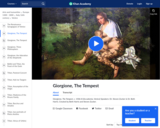
Giorgione, The Tempest, c. 1506-8 (Accademia, Venice)
- Subject:
- Art history
- Arts and Humanities
- Material Type:
- Lesson
- Provider:
- Khan Academy
- Author:
- Khan Academy
- Date Added:
- 09/22/2013

Giorgione, The Tempest, c. 1506-8 (Accademia, Venice)
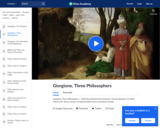
Giorgione, Three Philosophers, c. 1506 (Kunsthistorisches Museum, Vienna)
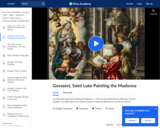
Jan Gossaert, Saint Luke Painting the Madonna, c. 1515-25 (Kunsthistorisches Museum, Vienna)

Speakers: Dr. Steven Zucker & Dr. Beth Harris
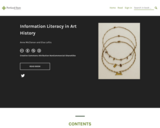
This textbook is an introduction to Information Literacy as it applies to Art History in the university context.

Jacob Lawrence (1917-2000) is widely recognized as one of the most important American artists of the 20th century. He is best known for epic multi-panel narratives like the Migration Series (1940-1941) and Struggle: from the History of the American People (1954-56), which he created as a young artist living and working in in New York City. The second half of Lawrence’s career, which he spent in Seattle as a Professor of Art at the University of Washington, has received far less attention. The essays in this volume, researched and written by the participants in the Spring 2021 art history seminar “Art and Seattle: Jacob Lawrence” at the University of Washington School of Art + Art History + Design, fill in this gap. In so doing, we take our lead from the artist’s own framing of the Seattle period as a critical stage in his artistic development, in which conceptual and formal concerns explored across his long career converged and became more of the sum of their parts.
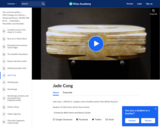
This video is from the Khan Academy subject of Humanities on the topic of Art History and it covers Jade Cong.

Jan van Eyck, Portrait of a Man in a Red Turban (Self-Portrait?),1433, oil on oak panel, 26 x 19 cm (The National Gallery, London)

A conversation between Salman Khan and Steven Zucker about Jasper Johns, Flag, 1954-55 (dated on reverse 1954), encaustic, oil, and collage on fabric mounted on plywood, three panels, 42-1/4 x 60-5/8 inches /107.3 x 153.8 cm (The Museum of Modern Art)
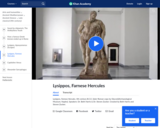
Lysippos, Farnese Hercules, 4th century B.C.E. (later Roman copy by Glycon)(Archaeological Museum, Naples)
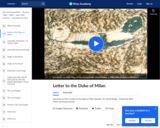
Leonarda da Vinci's Letter to the Duke of Milan

Jeweled upper cover of the Lindau Gospels, c. 880, Court School of Charles the Bald, 350 x 275 mm, cover may have been made in the Royal Abbey of St. Denis (Morgan Library and Museum, New York) Speakers: Dr. Nancy Ross and Dr. Steven Zucker
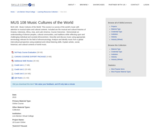
This course is a survey of the world's music with attention to musical styles and cultural contexts. Included are the musical and cultural histories of Ociania, Indonesia, Africa, Asia, and Latin America.
Course Outcomes:
1. Demonstrate an understanding of diverse peoples, cultural communities, and traditions while reflecting upon and challenging individual and societal ethnocentrism.
2. Describe and discuss music using appropriate terminology relevant for the field of ethnomusicology.
3. Analyze and identify music from a global intercultural perspective using analytical and critical listening skills.
4. Explain artistic, social, historical, and cultural contexts of world music.

This museum has a wonderful permanent collection of art and is constantly having special shows.
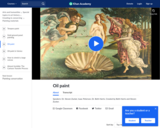
Speakers: Dr. Steven Zucker, Isaac Peterson, Dr. Beth Harris
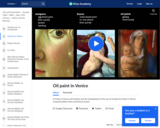
A review of fresco and tempera and the development of the use ofoil paint by artists in Venice.

This is an exploration of visual art forms and their cultural connections for the student with little experience in the visual arts. The course includes a brief study of art history and in depth studies of the elements, media, and methods used in creative process and thought. Visual and performing arts are part of the Humanities: academic disciplines that study the human condition and include the languages, literature, law, history and religion.
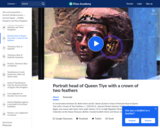
A conversation between Dr. Beth Harris and Dr. Steven Zucker in front of Portrait Head of Queen Tiye with a Crown of Two Feathers, c. 1355 B.C.E., Amarna Period, Dynasty 18, New Kingdom, Egypt, yew wood, lapis lazuli, silver, gold, faience, 22.5 cm high (Egyptian Museum and Papyrus Collection at the Neues Museum, Berlin)
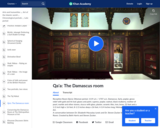
Reception Room (Qa'a), Ottoman period, 1119 a.h. / 1707 a.d., Damascus, Syria, poplar, gesso relief with gold and tin leaf, glazes and paint; cypress, poplar, walnut, black mulberry, mother-of pearl, marble and other stones, stucco with glass, plaster, ceramic tiles, iron, brass, 22 feet and a 1/2 inch high x 16 feet, 8-1/2 inches deep x 26 feet, 4-3/4 inches long, Metropolitan Museum of Art

Moodle™ 4.3 offers a powerful Question Bank feature, enabling instructors and course creators to build, organize, and reuse various types of questions across different courses, quizzes, and lessons. This guide provides a detailed overview of the core features of the Question Bank, along with practical tips for creating questions, organizing categories, sharing content across courses, and troubleshooting common issues.